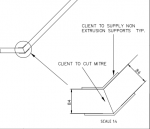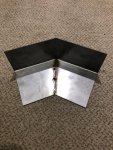Alloy
Well-known member
Wouldn't be too hard to cut (hot wire) a shape to fill the void. It comes down to how extreme the (60 degree North in winter) temperatures are.
I've seen sprayed/blown/expanded foam absorb water but I've not seen extruded foam ( buried outside a concrete foundation) absorb water.
Sealing the edges is good but how about fastening for awnings/racks/solar and cutouts for hatches/windows/doors?
I've seen sprayed/blown/expanded foam absorb water but I've not seen extruded foam ( buried outside a concrete foundation) absorb water.
Sealing the edges is good but how about fastening for awnings/racks/solar and cutouts for hatches/windows/doors?
















